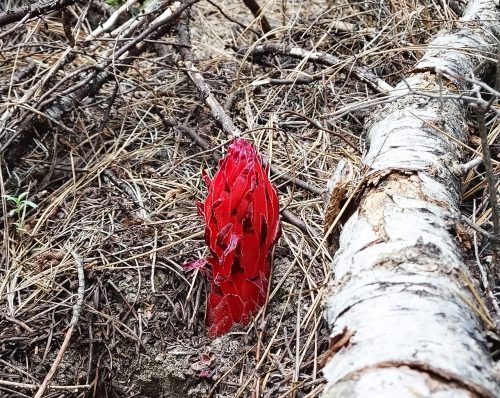Being somewhat averse to back-breaking labor, I have been a big fan of no dig gardening since I first read about it. Spading a garden to turn over the soil (and since you asked, yes, I have done it) is frightening. The idea of double digging—where you spade out a row and set it aside so you can dig another spade deeper—is a nightmare, not to mention a real favorite of chiropractors everywhere. So, aside from being good for me, is no dig really good for the soil? The answer is coming from a lot of surprising new research.

Soil is not just a mix of mineral and organic material; it has a living component that makes it truly a powerhouse. Without getting too technical, there are insects and worms, both visible and microscopic, with which we are more or less familiar. Then, there is a less visible network of bacteria, fungi, and algae, as well as a whole variety of single-celled organisms. A lot of these will survive a shovel, but others, like mycorrhizal fungi, create a living network through the soil that is broken by those shovel strokes.
The simple definition of the word “mycorrhiza” means “fungal root,” and roots are where the magic happens. These types of fungi form a symbiotic relationship with chlorophyll-producing plants that enable their roots to gain mineral nutrients like phosphorus, which is not readily available to the plant from the soil. It also enhances a plant’s ability to absorb water since the fungal network is much larger than the root network of the plant itself. In return, the green plants provide carbohydrates which the mycorrhiza can’t produce itself since they cannot fix carbon.
One example of this miracle that we can see here in the Sierra Nevada is the snow plant that emerges in pine and cedar forests every spring. These bright red plants totally depend on mycorrhizal fungi to survive. The snow plant hooks into the mycorrhizal network and indirectly feeds off of the coniferous forest, parasitizing both the fungal network and the pines which produce all the carbohydrates. One thing that surprised me about snow plants is just where they fit into the plant world. Oddly enough these red beauties are related to madrones, manzanitas and azaleas.
Carbon fixing via photosynthesis seems to be the key factor in all of these relationships. It also is a key element in the health of our planet. Carbon dioxide, a greenhouse gas that contributes to global warming, is taken in by green plants and converted to the carbohydrates and sugars which feed us all, human, mycorrhiza and snow plant alike. The sweet peaches of summer are just one example of the rich goodness of the photosynthetic process. Carbon fixing and the storage of that carbon underground is one of the ways that global warming is fought by the natural world. Researchers at the University of Cape Town have estimated that the relationship between mycorrhizal fungi and the plants they support may be responsible for locking away more than one-third of the carbon produced through emissions from fossil fuel worldwide.
So, between doing my part to protect the world from global warming and saving my aching back, I will preserve the mycorrhizal network in my garden and practice no dig gardening. This provides me with my best excuse ever to not dig the garden!
Jim Bliss is a University of California Cooperative Extension Master Gardener of Tuolumne County.

